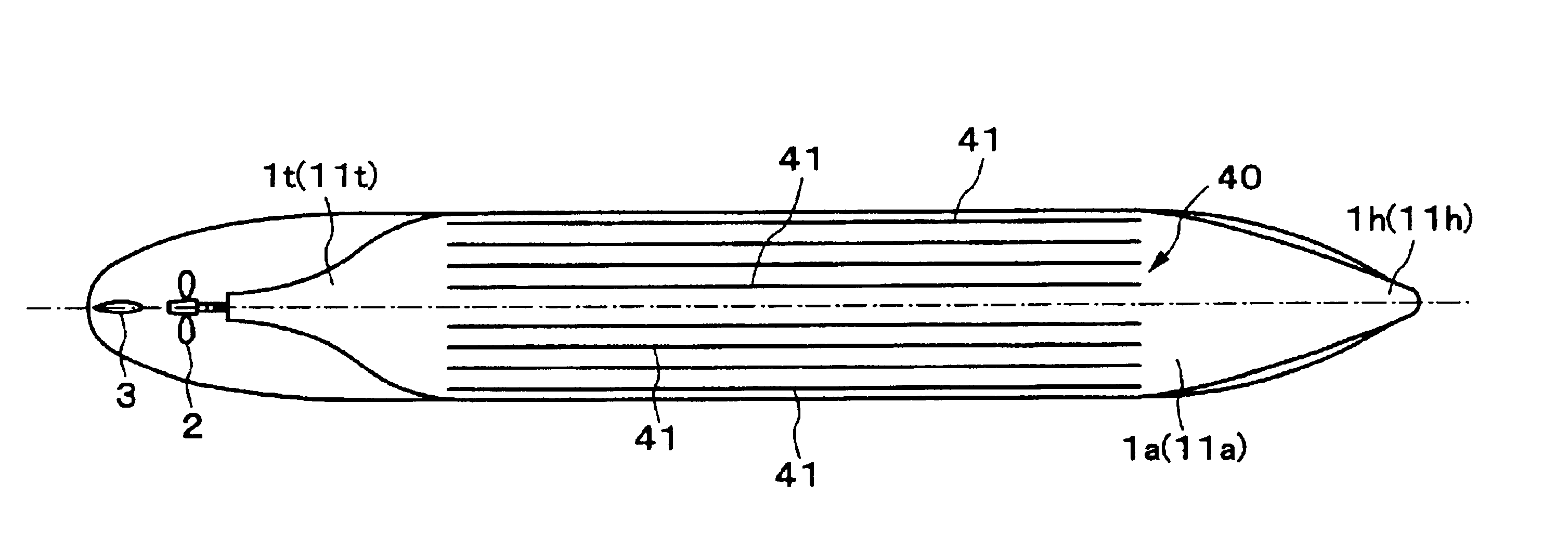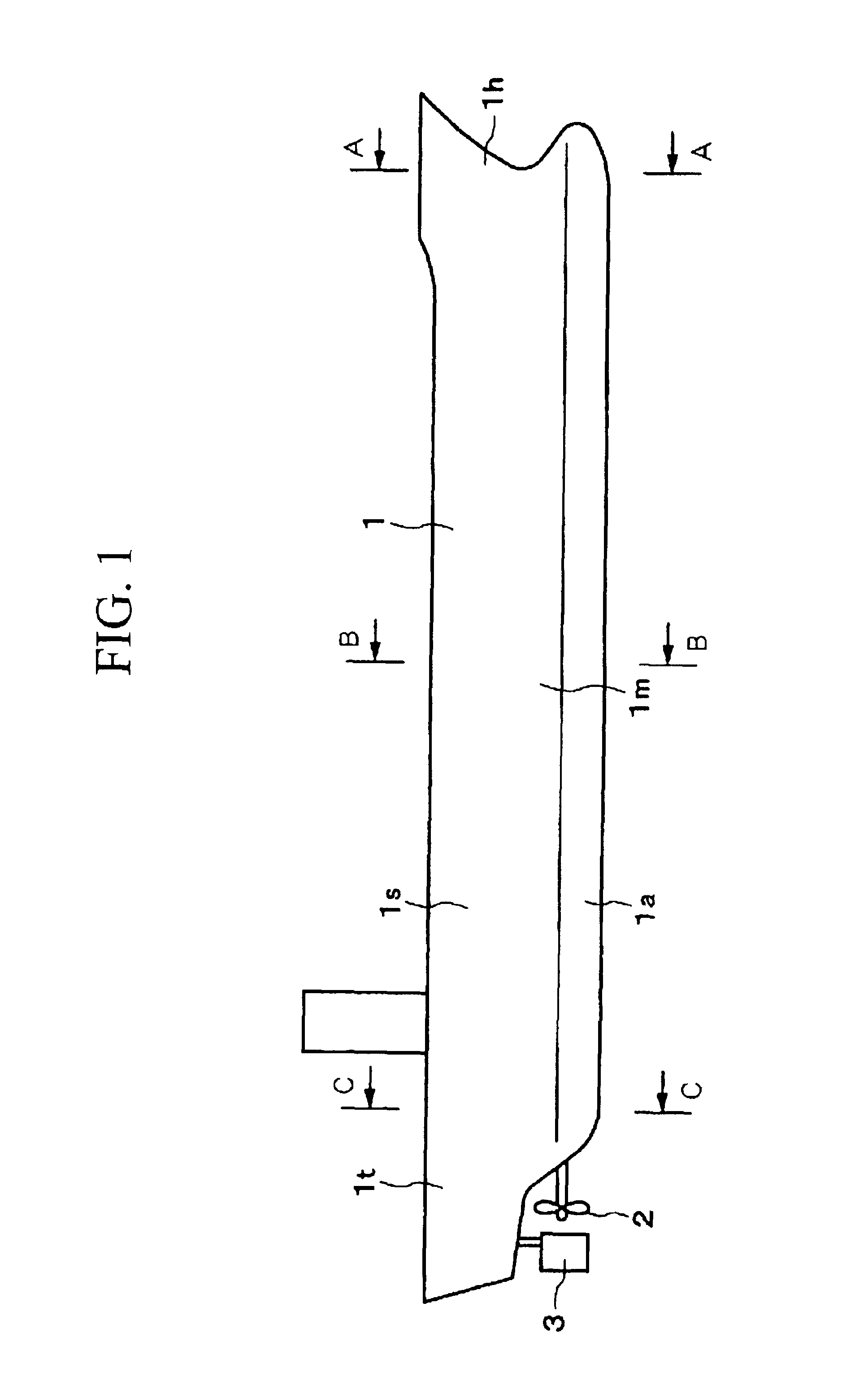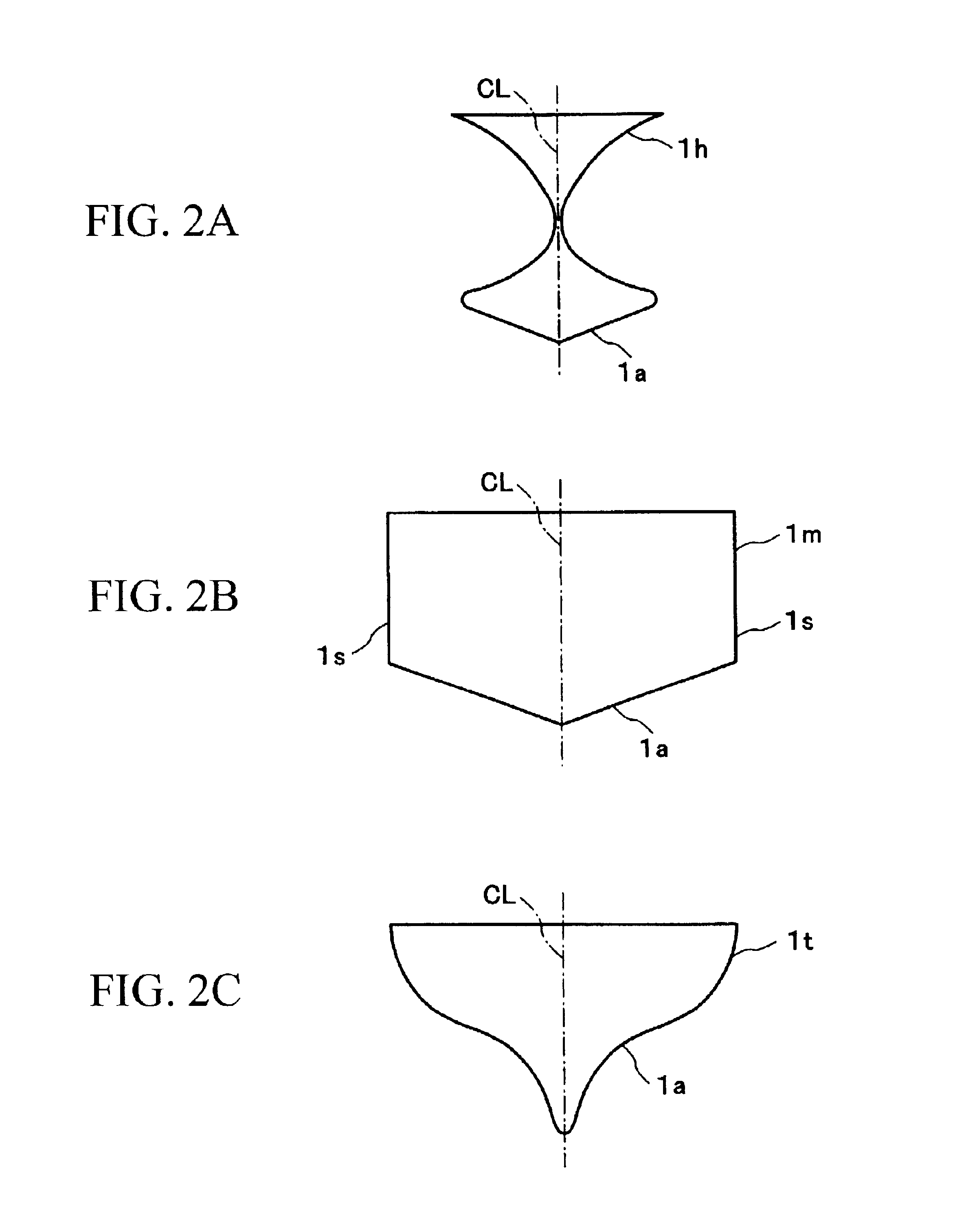Light transport ship
a technology for transporting ships and ships, applied in special-purpose vessels, vessel construction, marine propulsion, etc., can solve the problems of increasing the fluctuation of load on the propeller and the main engine, affecting the maneuverability, and reducing the propulsion performance, so as to achieve the same total displacement, reduce the effect of dumping of ballast water, and reduce the effect of dumping
- Summary
- Abstract
- Description
- Claims
- Application Information
AI Technical Summary
Benefits of technology
Problems solved by technology
Method used
Image
Examples
first embodiment
Firstly, the present invention is described with reference to FIG. 1 through FIG. 4. FIG. 1 is a side view showing a large transport ship according to the present embodiment. Furthermore, FIG. 2A to C are diagrams showing the same large transport ship, wherein FIG. 2A is a cross-sectional view along the line A--A in FIG. 1, FIG. 2B is a cross-sectional view along the line B--B in FIG. 1 and FIG. 2C is a cross-sectional view along the line C--C in FIG. 1. FIG. 3 is a diagram showing the same large transport ship in a fully loaded state, and is a cross-sectional view of the same section shown in FIG. 2B. Furthermore, FIG. 4 is a diagram showing the same large transport ship in an unloaded state, and is a cross-sectional view of the same section shown in FIG. 2B.
In FIG. 1, reference symbol 1 indicates a hull, reference symbol 2 indicates a propeller, and reference symbol 3 indicates a rudder. A bow 1h of the hull 1 is on the right side of the figure, the position of the cross-section B...
PUM
 Login to View More
Login to View More Abstract
Description
Claims
Application Information
 Login to View More
Login to View More - R&D
- Intellectual Property
- Life Sciences
- Materials
- Tech Scout
- Unparalleled Data Quality
- Higher Quality Content
- 60% Fewer Hallucinations
Browse by: Latest US Patents, China's latest patents, Technical Efficacy Thesaurus, Application Domain, Technology Topic, Popular Technical Reports.
© 2025 PatSnap. All rights reserved.Legal|Privacy policy|Modern Slavery Act Transparency Statement|Sitemap|About US| Contact US: help@patsnap.com



